Due to the hot, dry and windy weather conditions the first few weeks of spring have been disappointing in the orchid world. Nevertheless all the species that could be expected to flower at this time of the year have been seen. Admittedly the numbers have been fewer, and many plants have been short in stature and often short-lived, but they have been there in the field for those people who were prepared to accept the challenge and search for them.
The Small Green-comb Spider Orchid, Caladenia parva, the Heart-lipped Spider Orchid, C. cardiochila, and the Plain-lipped Spider Orchid, C.clavigera, appeared early in the month. While the Small Green-comb Spider faded quickly, the other two species were still flowering towards the end of the month.

Small Green-comb Spider Orchid
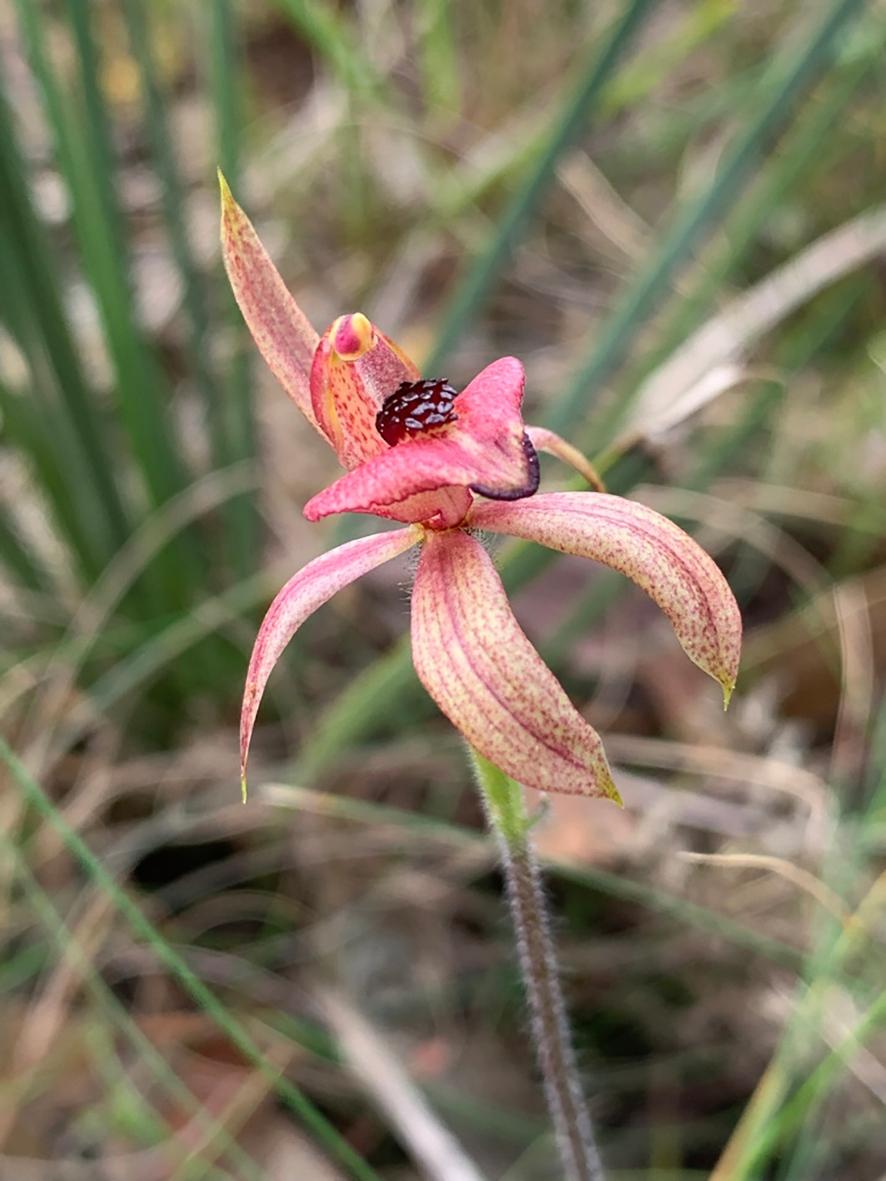
Heart-lipped Spider Orchid
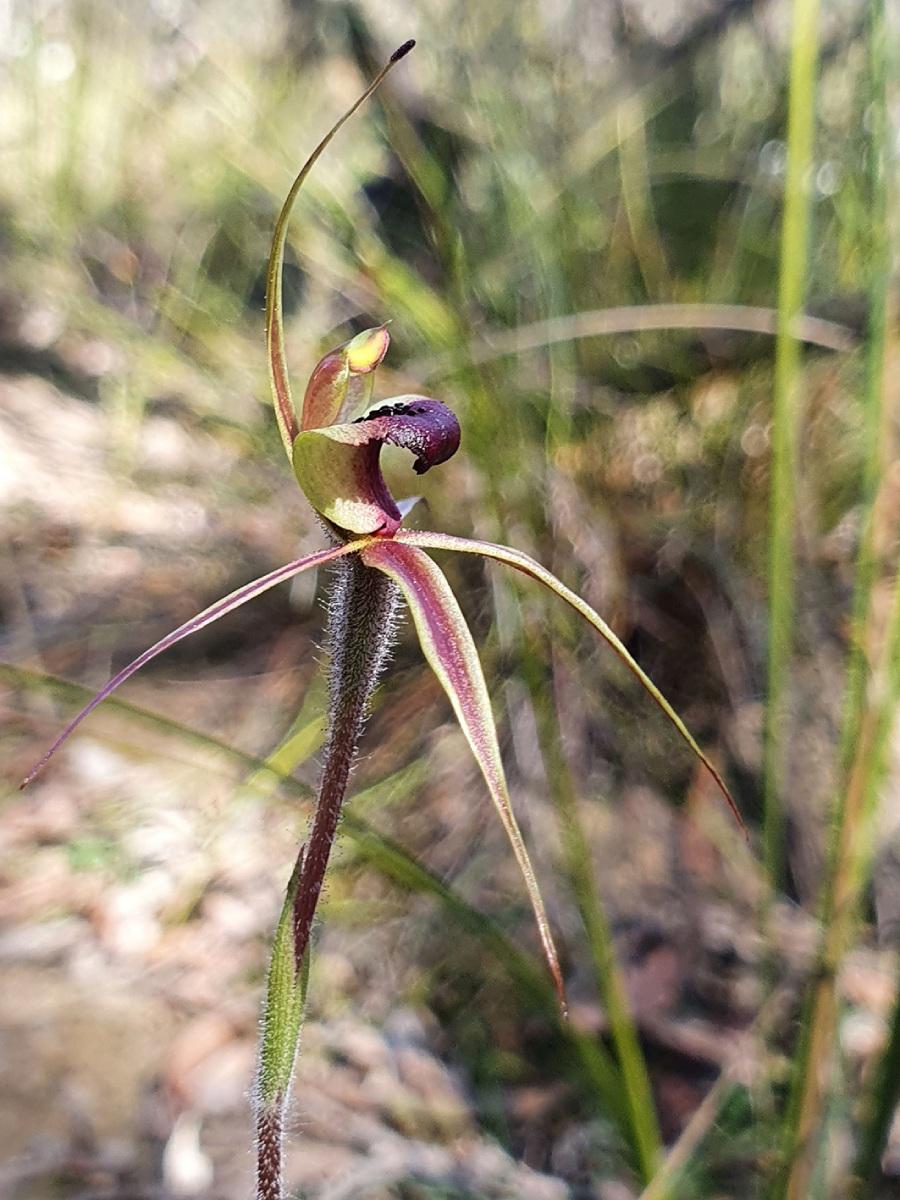
Plain-lipped Spider Orchid
A few Large White Spider Orchids, C. venusta, bloomed in time for the Angair Flower Show, and many people were able to admire the spectacular flowers.
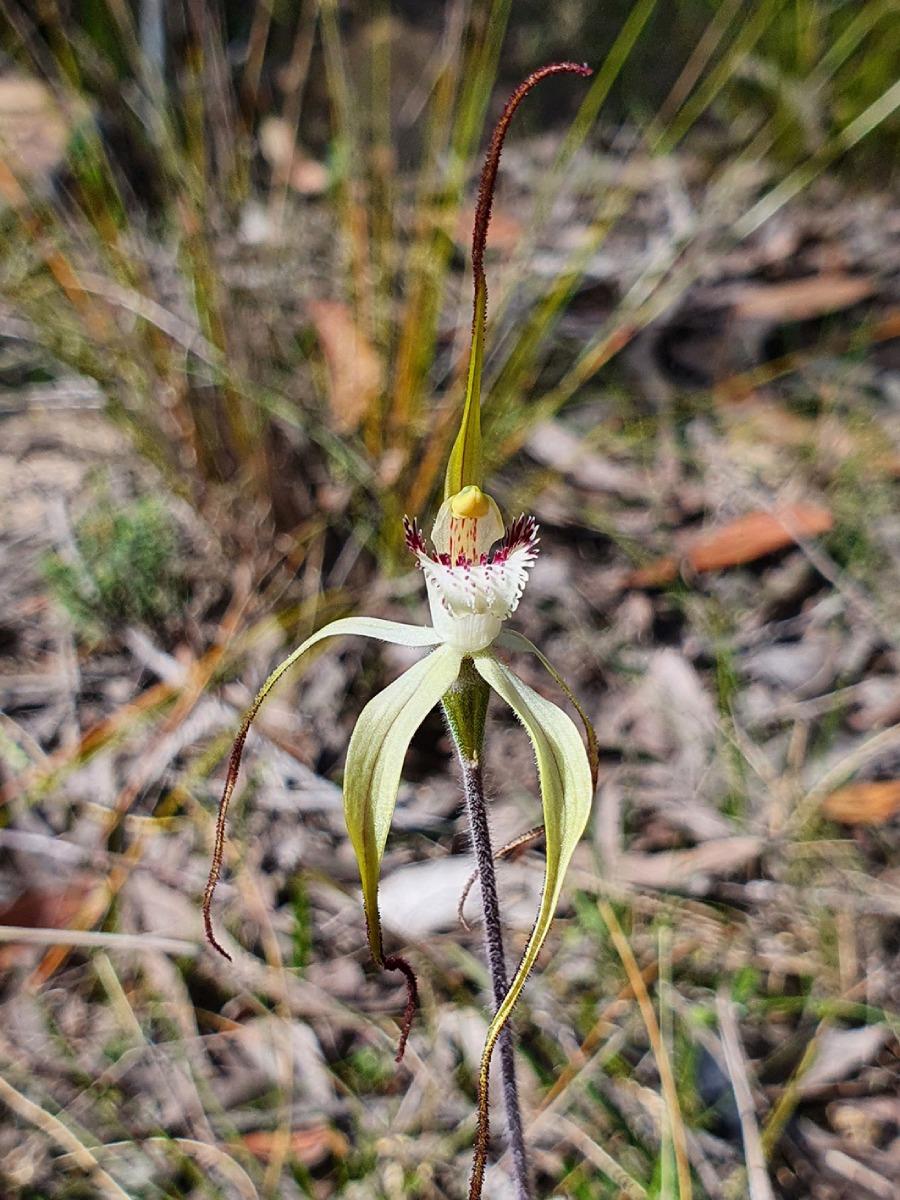
Large White Spider Orchid
A good number are now appearing in various sites and we are also starting to see buds and a few flowers of the Eastern Mantis Orchid, C. tentaculata.
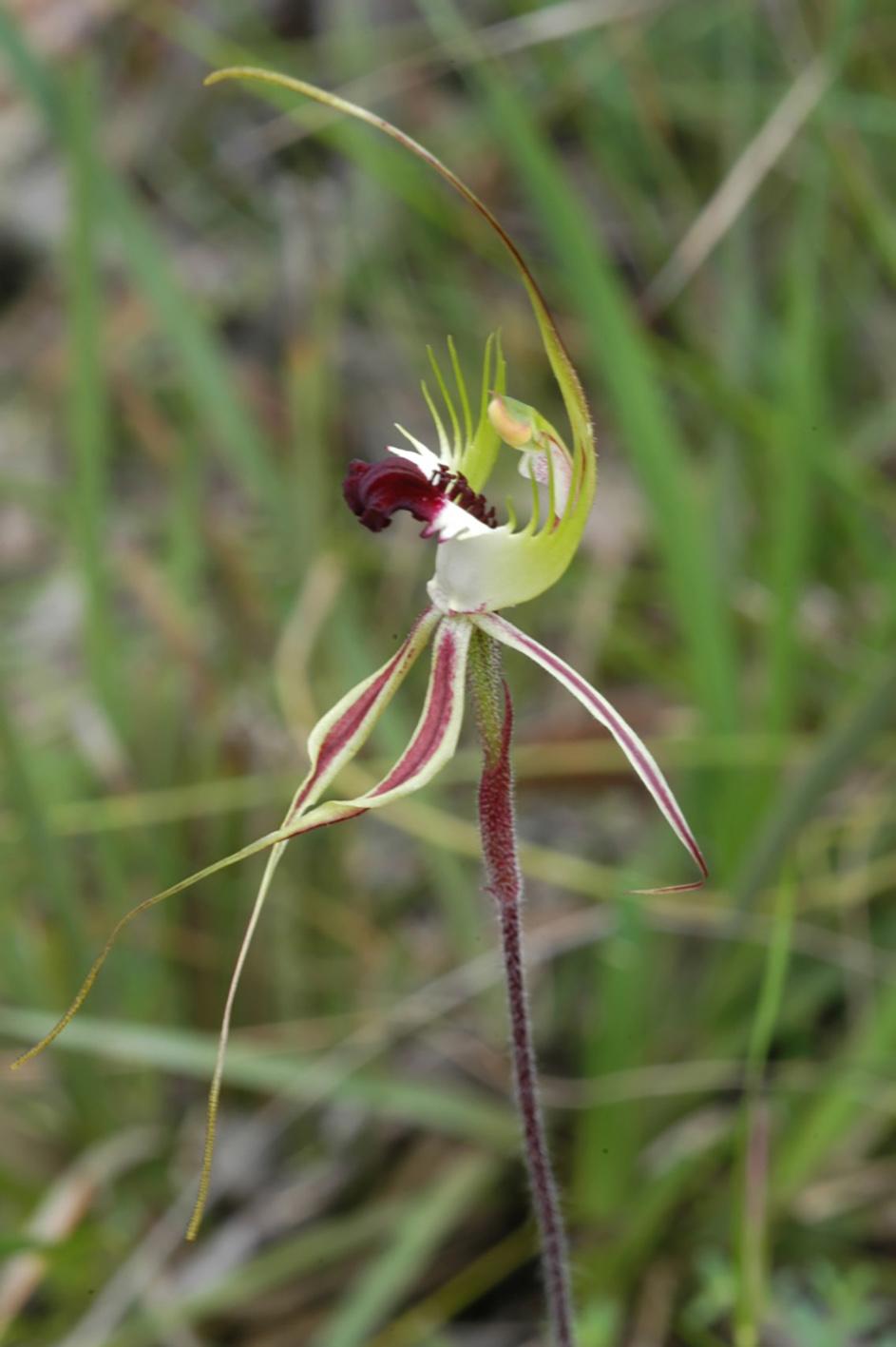
Eastern Mantis Orchid
The sun orchids are now taking pride of place on these warm, sunny days. There have been some great displays of Rabbit Ears, Thelymitra antennifera, with their bright yellow flowers, while the smaller paler yellow flowers of the Twisted Sun Orchid, T. flexuosa, can also be found. The flowers of this species open reluctantly and are short-lived.

Rabbit Ears
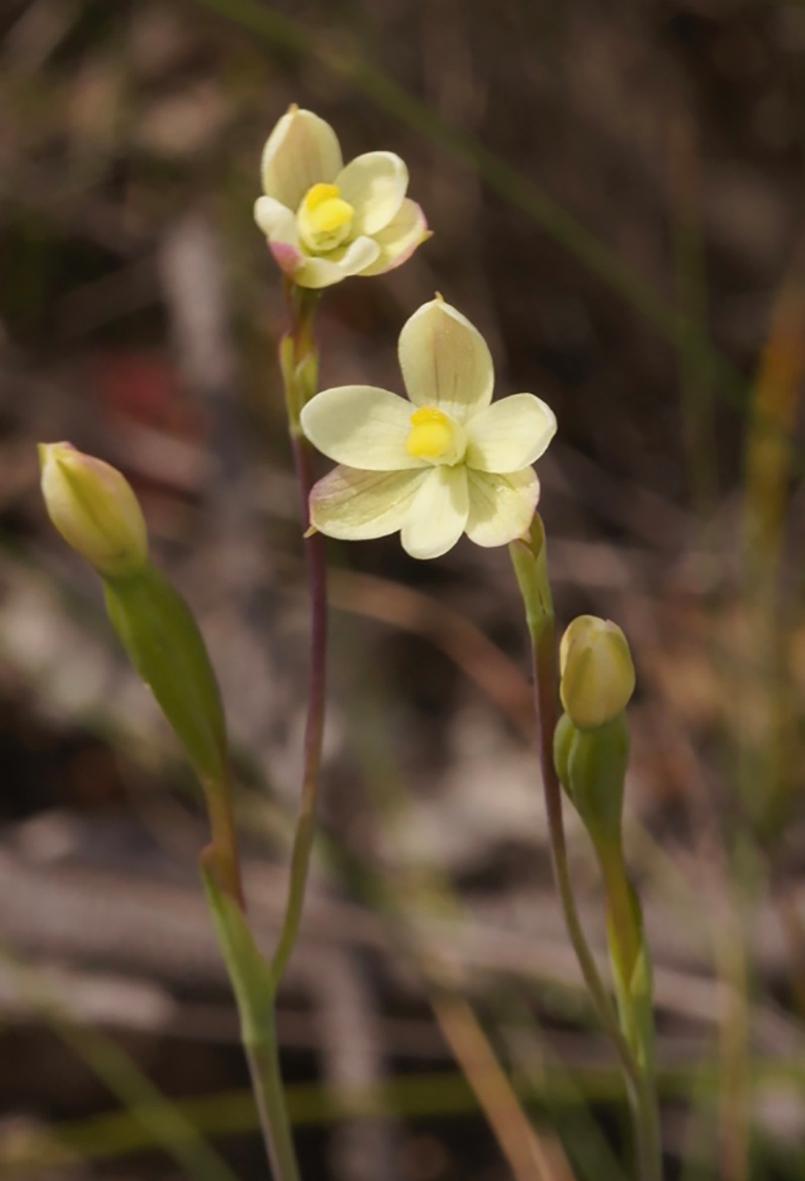
Twisted Sun Orchid
Salmon Sun Orchids, T. rubra, are opening freely and we were pleased to find one bright pink flower of the rare Pink Sun Orchid, T. carnea, on the edge of Forest Road.
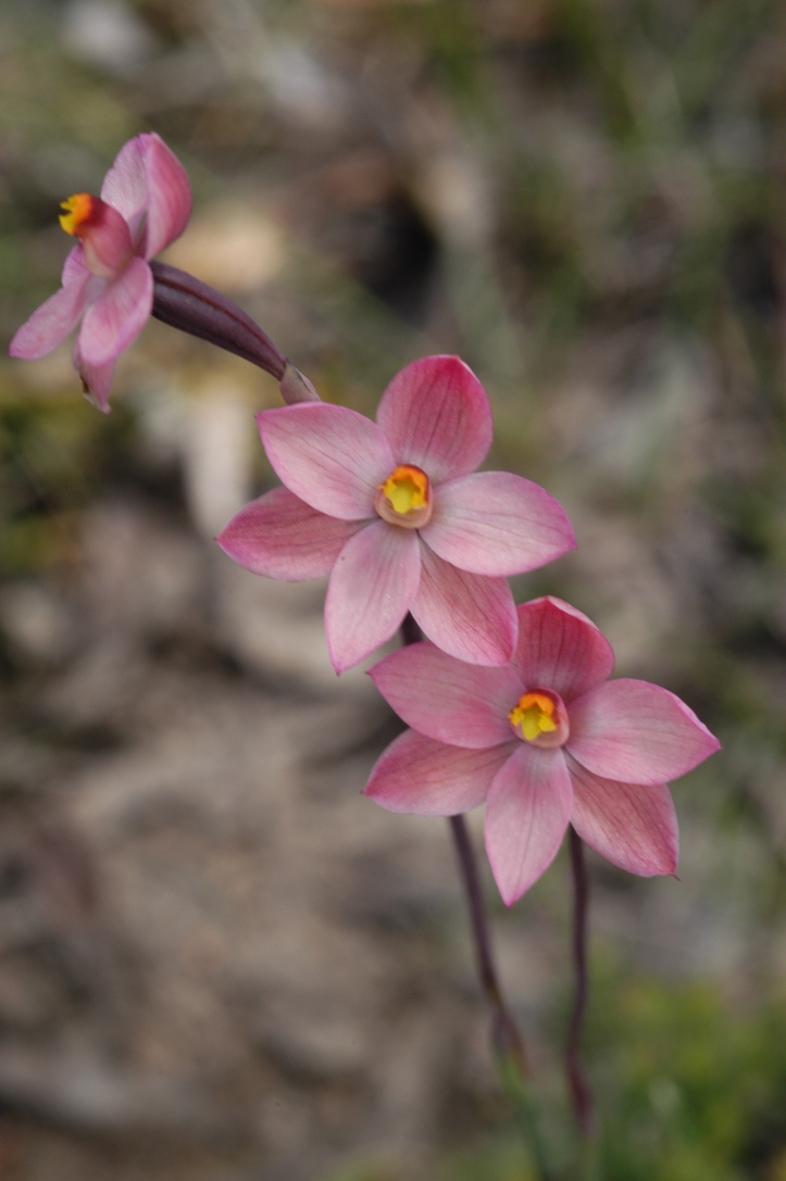
Salmon Sun Orchid
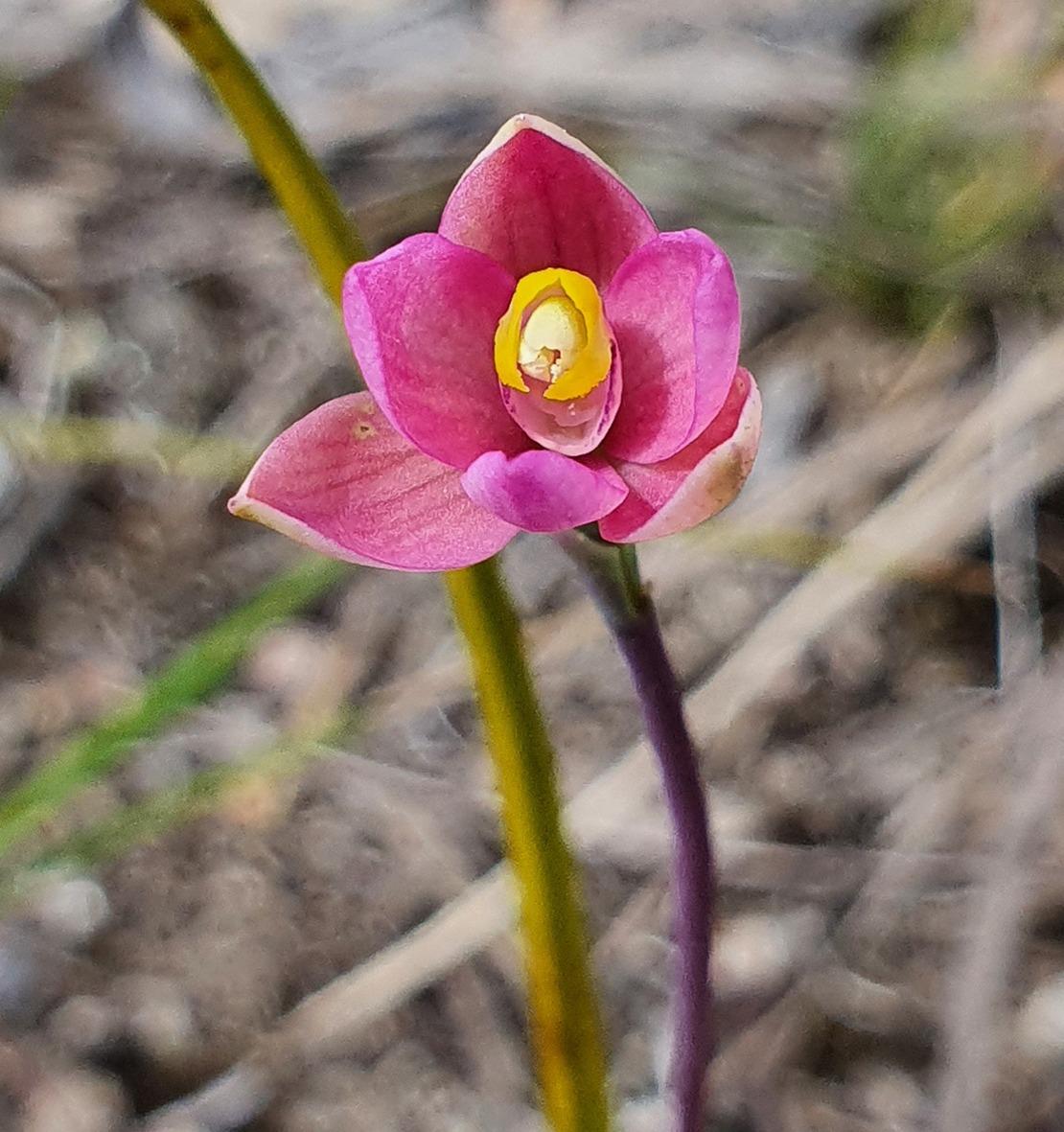
Pink Sun Orchid
Hopefully you may have seen a Great Sun Orchid, T.aristata, in full bloom but you have to be alert as they are being quickly eaten by hungry kangaroos or wallabies. There were two spectacular specimens on the O’Donohue Heathland that were greatly admired by visitors to the Angair Show.

Great Sun Orchid
Some of the smaller blue orchids are also opening. Our common species is the Rush-leaf Sun Orchid, T. juncifolia.
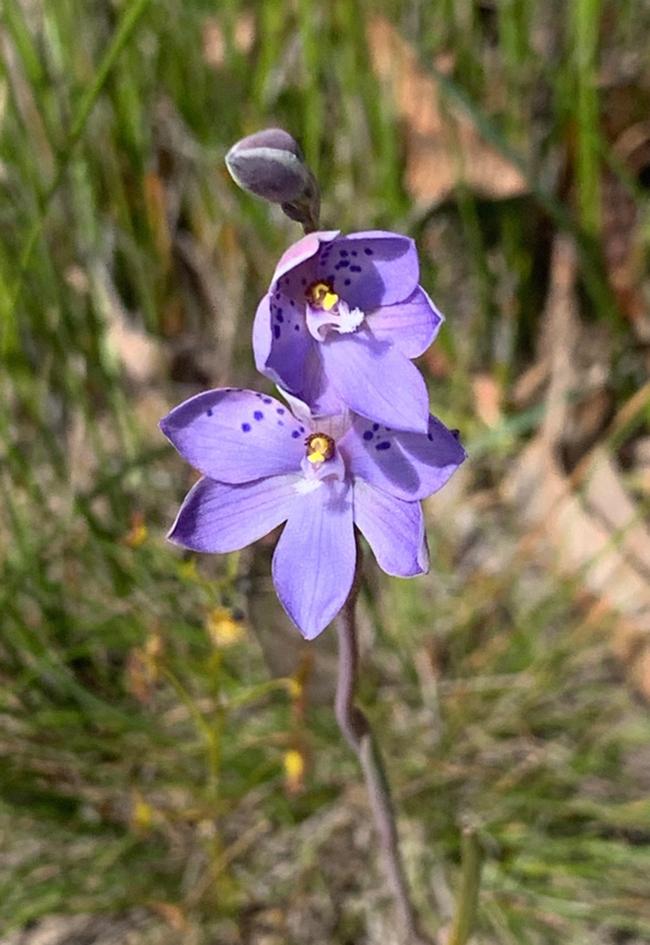
Rush-leaf Sun Orchid
But the rarer Spotted Sun Orchid, T.ixioides, may also be opening. Look at the leaves closely as they do help with identification. The Spotted Sun Orchid is a much stronger species than the Rush-leaf. The rush-like leaf of T. juncifolia often encircles the base of the flower stem.
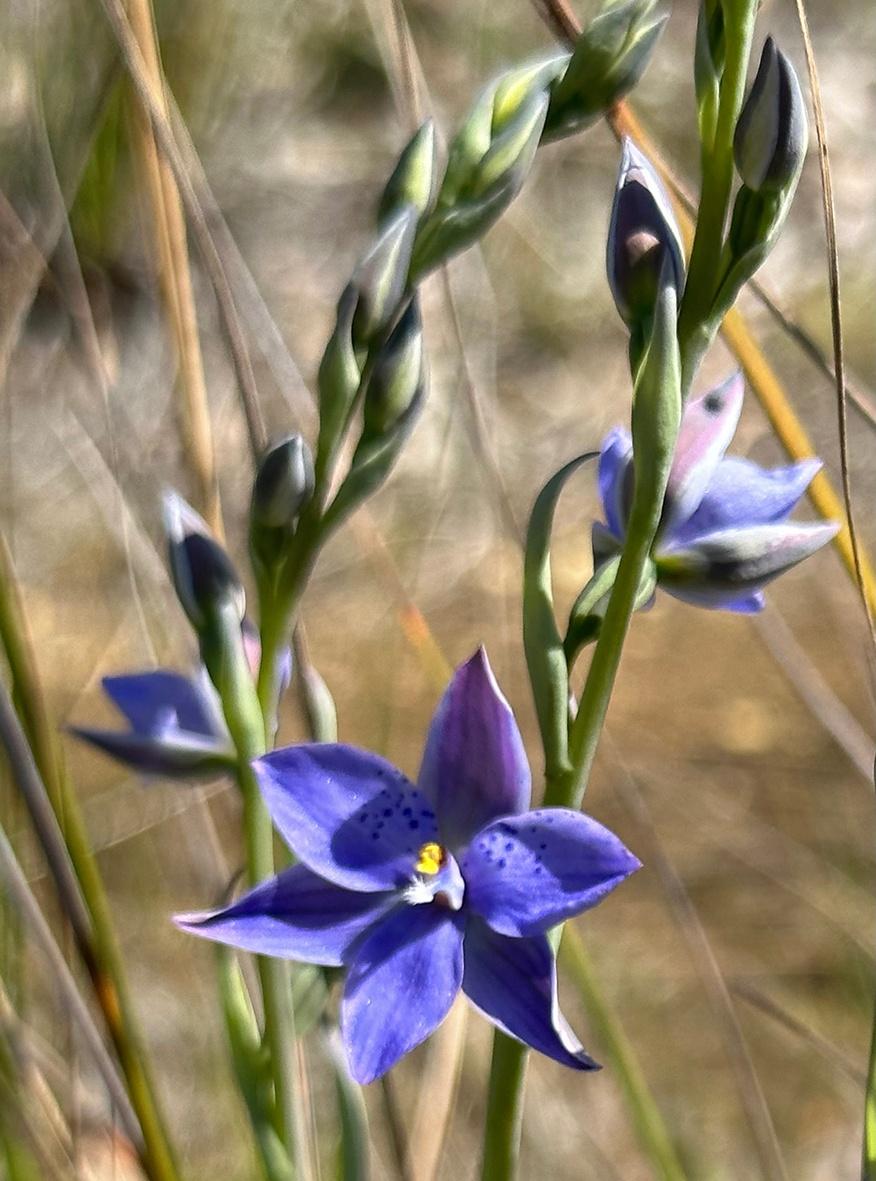
Spotted Sun Orchid
Buds of many of our other sun orchids can also be observed. They seem to be waiting for some spring rain to encourage them to develop.
The beautiful purple flowers of our Wax-lip Orchids, Glossodia major, can be seen on almost every track you may walk along. They can always be relied upon to brighten up our heathlands and they don’t seem to mind the dry conditions.

Wax-lip Orchid
Perhaps our two disappointments have been the Hare Orchids, Leptoceras menziesii, and the Red Beaks, Pyrorchis nigricans. We were so looking forward to good flowering as we had found many colonies of leaves in the recently burnt areas. Both of these species usually produce extensive flowering after fire. However the leaves and buds just faded away, and we saw only a few small flowers of both species apart from two tall Red Beaks that appeared near Teds Track at Aireys Inlet.

Red Beaks
We managed to keep one small Hare Orchid in good condition to share with visitors to the Angair Show by giving it a drink of water each time we visited. Just recently we found a small group flowering in the Harvey St area. They were so tiny but perfect in every way. We also gave them a drink to say thank-you for coming.

Hare Orchid
The Unicorn Bearded Greenhood, Pterostylis unicornis, flowered reasonably well although many withered very quickly. However flowers are still starting to appear. They reproduce from seed and you will often find them growing in clumps, although many are just single specimens.

Unicorn Bearded Greenhood
On the brighter side the brightly coloured Donkey Orchids, Diuris orientis, are appearing in good numbers on many of our orchid sites, some very small but others impressive in their stature and flower size.

Donkey Orchid
And the finger orchids White Fingers, Caladenia catenata, Pink Fingers, C. carnea and their many hybrids are widespread and most spectacular.
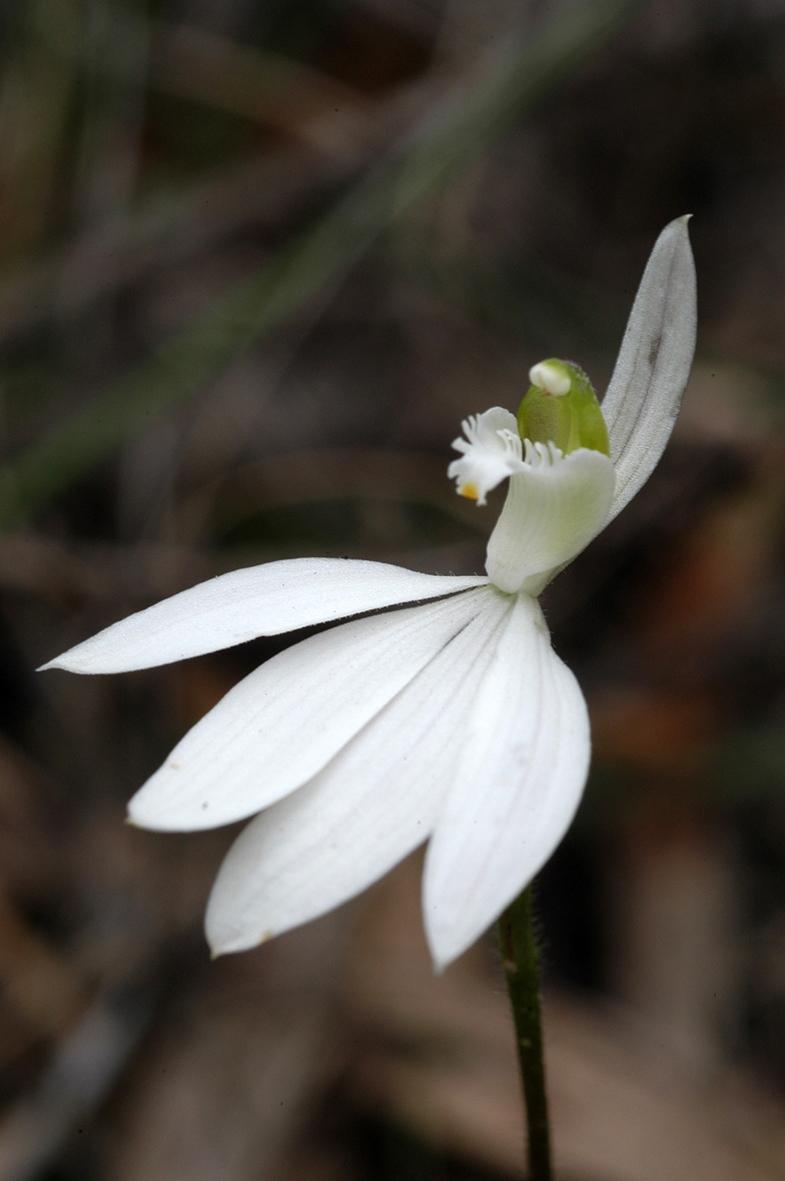
White Fingers
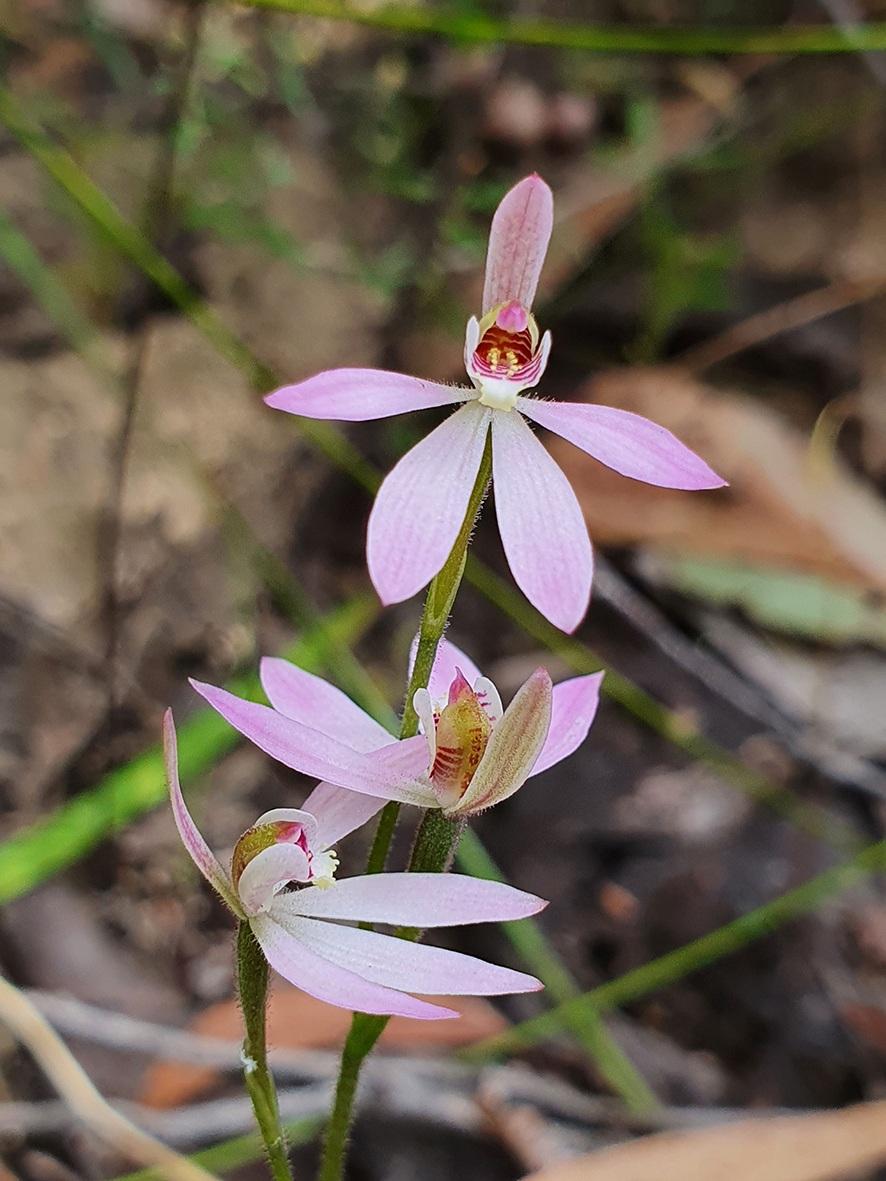
Pink Fingers
Our endemic species – Angahook Fingers, C. maritima, is also having a reasonable flowering season but once again there are many hybrids with Pink Fingers.
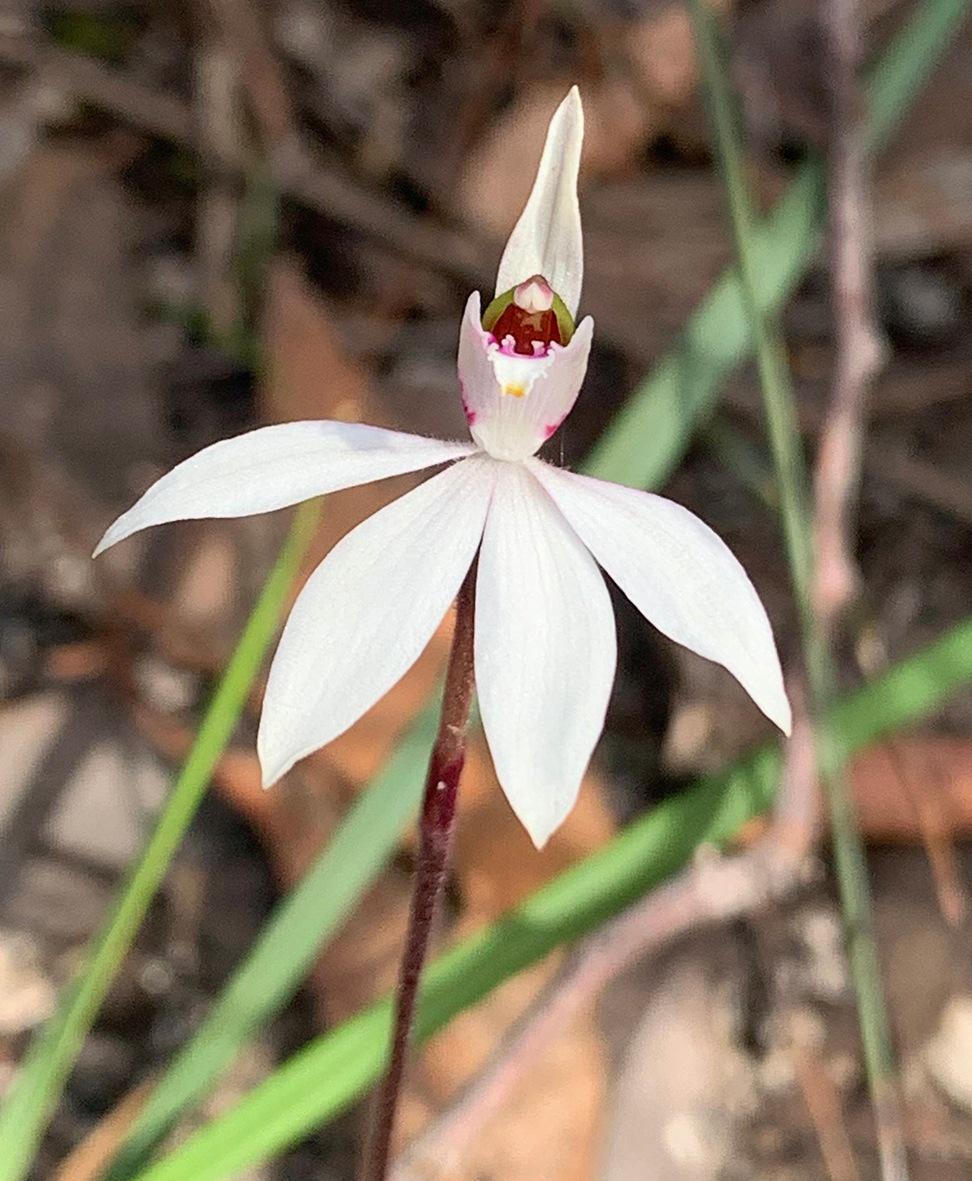
Angahook Fingers
Just where is the rainfall that would brighten up the orchid world? Yes we need the sun for our beautiful sun orchids to show their bright colours, but we also need some rain to help them on their way.
Enjoy your time with the spring flowers. It is a short-lived experience. Please let us know of any of your interesting experiences. All of our orchids are documented and photographed in Orchids of the Anglesea District. The new edition costing $30.00 is available from the Angair Natural History Centre on Monday and Thursday mornings, online through the online order form and from Anglesea News & Lotto and Great Escape Books in Aireys Inlet.
Margaret MacDonald margmacmoggs@icloud.com Alison Watson alisonw577@gmail.com